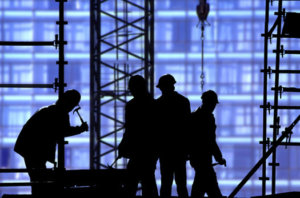 Construction observation is a powerful weapon for architects and engineers (A/E) in their risk management arsenal. Certain clients understand the benefits when A/E firms offer construction phase services. However, driven by slow economic conditions, many clients are asking firms to do more, with less, including reducing or eliminating construction phase services. Other clients decide they will administer the construction contract themselves or decide to use a third party instead of the A/E firm. Clients have also held the A/E to a higher standard of care when providing construction observation services. How do these actions affect A/E firms?… It significantly increases the A/E’s risk and liability exposures.
Construction observation is a powerful weapon for architects and engineers (A/E) in their risk management arsenal. Certain clients understand the benefits when A/E firms offer construction phase services. However, driven by slow economic conditions, many clients are asking firms to do more, with less, including reducing or eliminating construction phase services. Other clients decide they will administer the construction contract themselves or decide to use a third party instead of the A/E firm. Clients have also held the A/E to a higher standard of care when providing construction observation services. How do these actions affect A/E firms?… It significantly increases the A/E’s risk and liability exposures.
Construction Phase Risks
Details in design documents cannot anticipate every contingency that may occur during the construction phase. If the A/E firm of record is not retained to provide clarification of the plans and specifications the risk of misinterpretation of the contract documents increases. Bad decisions can lead to project confusion, delays, increased costs, disputes and claims between the owner and the A/E.
The exposure of the A/E is increased due to certain owners and contractors asserting that the designer has a similar responsibility of the contractor for discovering all defects on the project. Based on this distortion and unrealistic expectation of construction observation services, owners and contractors have stated the A/E should be a guarantor of the contractor’s work. These expectations dramatically increase the A/E’s standard of care and risks associated with construction phase services. Court decisions have ruled in Owners’ favor holding that the A/E has a duty to guard the owner against all non-conforming work on the project, although much of that work was completed when the firm was not present on-site. Members of the plaintiff’s bar continue efforts to hold the A/E accountable for this higher standard of care for construction phase services.
Standard of Care
The A/E’s construction observation standard of care, unless increased by contractual provisions, or by conduct is identified in general terms as; ” reasonable care for discovering and reporting nonconforming work through observation at certain times during the construction phase, general familiarity with the work and reporting the general progress and quality of the work as completed, to the owner.” The A/E’s construction phase service standard is clearly different from the contractor’s where they are responsible for the means and methods of the construction process.
Assignment of Construction Phase Risk
All parties involved in the design and construction process share in a significant amount of risk. The most effective risk management strategy is to have the party with the responsibility of providing the service retain the responsibility for managing the associated risk. When the A/E of record is not permitted to perform construction observation services through the construction phase it loses the ability to manage that exposure while retaining a great deal of potential liability. A/Es that provide construction phase services are in a better position to protect the client’s interests, as well as mitigating their own risk. The design A/E is clearly in the best position to reduce misunderstandings of design intent thereby avoiding incorrect modifications to the design that lead to disputes and claims.
Construction Phase Risk Management Strategy
If construction observation services are not included in the A/E’s scope of services, the A/E should protect themselves against potential claims. If the client is assuming the responsibility for decisions made during the construction phase, the client or owner’s representative should also assume the risk. The party performing the observation services and administering the construction contract, should assume responsibility and risk for its actions in interpreting the documents and making decisions on the project site. The A/E should be released from any claims and be indemnified for costs or problems associated with changes made by others.
The most effective approach when offering construction phase services is with a full-time on-site project representative. With this level of construction phase services the chances of discovering and correcting defects in construction phase work increases. Based on a survey of design professionals, approximately 20% of firms offer this level of construction phase service. If a client does not select this option, the next step is visiting the site at “appropriate intervals” during the construction process. Approximately 40% of firms offer this level of service. Another 20% offer as requested by the owner and the remaining 20% stated no construction observation services were provided. It is important to explain the trade-offs to the client in each level of service, quality and associated fees. The client’s decision regarding construction phase services needs to be documented as well as your offerings.
You can continue reading this 2010 Guest Essay by downloading the PDF here. Other topics covered include Consultant Providing Construction Phase Services, Construction Observation Services, Construction Phase Services, and Owners’ Construction Phase Service Responsibility.
About the Author
Timothy (Tim) Corbett is Founder and President of SmartRisk, a Pasadena, CA based consultancy providing risk management solutions to Design and Building Professionals. Mr. Corbett holds a BS Degree in Security & Risk Management, Bellevue University, MS Degree in Management Regis University, Denver, a degree in Environmental studies as well as concentrated studies in Architecture Design. As a recognized expert, Tim is a requested speaker at regional and national forums and published on the topics of insurance and risk management. For more information on this or other topics, visit SmartRisk’s website.



